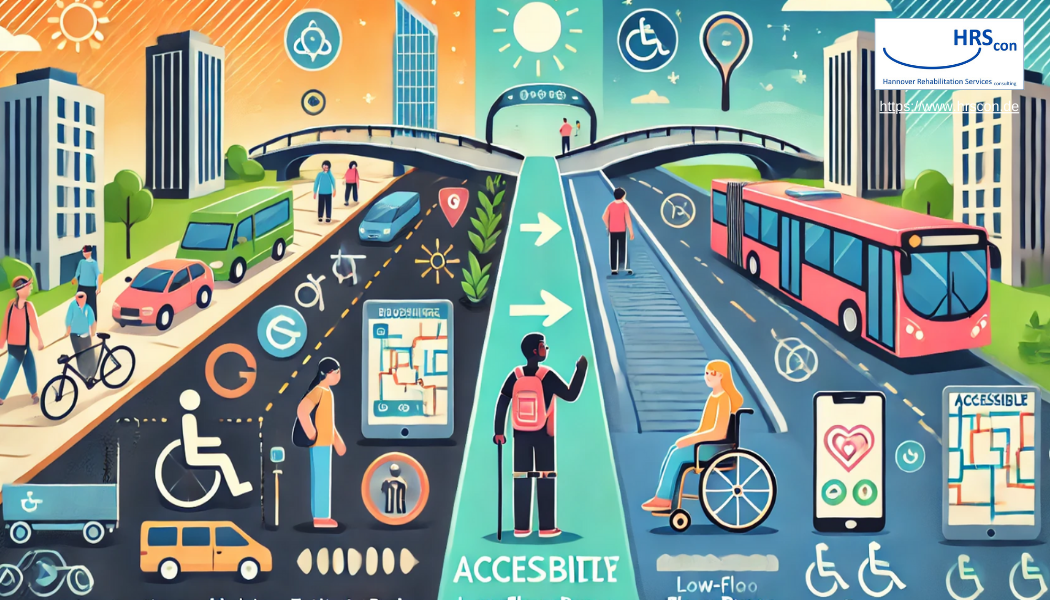Travel is more than movement; it’s freedom, access to opportunity, and a bridge to equality. Yet, for millions of people with disabilities, it’s a daily challenge filled with barriers. A comprehensive meta-review by leading researchers has highlighted the pressing need to address these systemic inequities in travel and transportation. The findings shed light on the travel behaviors of individuals with disabilities, the barriers they face, and practical solutions to make accessible travel a global standard.
Key Insights on Travel and Disability
The review analyzed 24 studies published from 2019 to 2024, examining the experiences of people with physical, cognitive, and sensory disabilities across different transport systems. The findings revealed a stark gap in travel accessibility and inclusivity:
- Reduced Travel Frequency
People with disabilities travel 10–30% less frequently than their non-disabled counterparts. This reduced mobility leads to missed medical appointments, limited employment opportunities, and social isolation. - Increased Travel Costs
Adapted vehicles, frequent reliance on taxis, and the lack of affordable public transport options create financial strain, further limiting accessibility. - Longer and More Complex Journeys
Public transport systems often involve circuitous routes, long waiting times, and unreliable schedules, disproportionately affecting individuals with disabilities. - Barriers to Independence
Issues like poorly maintained sidewalks, lack of tactile or auditory cues, and insufficient staff training hinder independent travel, perpetuating reliance on caregivers.
Table 1: Common Barriers in Travel for People with Disabilities
| Barrier | Impact | Example |
|---|---|---|
| Inaccessible Infrastructure | Limits mobility and safety. | Narrow sidewalks, lack of ramps, and uneven paths. |
| High Costs | Creates financial burdens and reduces travel opportunities. | Adapted vehicles and frequent taxi usage. |
| Unreliable Public Transport | Leads to delays and complex travel routes. | Inconsistent bus schedules and inaccessible stops. |
| Lack of Staff Training | Reduces quality of service and creates discomfort for travelers with disabilities. | Unhelpful or unaware transport staff. |
| Technology Gaps | Excludes individuals without access to accessible navigation tools and apps. | Lack of real-time updates in accessible formats. |
Real-Life Impact of Travel Barriers
Travel restrictions have far-reaching implications. For example:
- Employment: Limited mobility reduces access to jobs, leading to higher unemployment rates among people with disabilities.
- Healthcare: In the U.S. alone, 11.2 million medical appointments are missed annually due to travel challenges, costing $19 billion in healthcare expenses.
- Social Isolation: Reduced recreational and social travel increases loneliness and negatively impacts mental health.
These barriers highlight the urgent need for systemic changes to improve accessibility in transportation.
Solutions: Building an Inclusive Travel Future
Addressing these challenges requires a multi-pronged approach that involves innovation, policy reform, and community collaboration.
1. Universal Design
Creating infrastructure and vehicles that cater to all needs benefits everyone, including people with disabilities. Examples include:
- Low-floor buses with minimal gaps for wheelchair users.
- Tactile paving and audible signals for individuals with visual impairments.
2. Assistive Technology
Innovative tools can empower independent travel:
- Wayfinding Apps: Apps providing real-time navigation with audio and haptic feedback.
- Smart Bus Stops: Features like USB charging, real-time arrival updates, and wheelchair accessibility.
3. Policy Reforms
Governments must integrate accessibility into transport planning. Policies like the UN’s Sustainable Development Goal 11 aim to make cities inclusive and safe for all by 2030. Incentives for accessible vehicle design and subsidies for adaptive equipment can further drive change.
4. Staff Training
Empathy and awareness training for transport staff can improve the travel experience for people with disabilities. This includes understanding non-visible disabilities and assisting with mobility aids.
5. Community Involvement
Involving people with disabilities in the design and implementation of transport systems ensures solutions meet real-world needs.
Success Stories: Progress in Action
Several cities and organizations are leading the way in accessible travel:
- London’s Clear Channel Bus Stops: Equipped with Google Outside technology, these stops provide real-time updates and are wheelchair accessible.
- Paris’ Smart Stops: Featuring USB charging, Wi-Fi, and interactive ticketing designed for people with disabilities.
- Sweden’s Mobility Training for Children: Programs teaching children with disabilities to navigate public transport safely.
These initiatives demonstrate the feasibility and impact of inclusive design when combined with community and policy support.
Looking Ahead: A Call to Action
Travel accessibility is not just a technical issue; it’s a matter of equality and human rights. The United Nations Convention on the Rights of Persons with Disabilities (UNCRPD) emphasizes that accessible transportation is essential for equitable access to goods, services, and opportunities.
As we move forward, collaboration between policymakers, transport providers, and communities will be vital. Technology, innovation, and universal design hold the key to breaking barriers and creating a world where everyone can travel freely.
Conclusion
Accessible travel is not a privilege—it’s a necessity. Addressing the challenges faced by people with disabilities will require commitment, innovation, and inclusive policies. But the benefits are clear: greater independence, economic opportunities, and a more connected society.
It’s time to rethink travel and ensure that no one is left behind.



